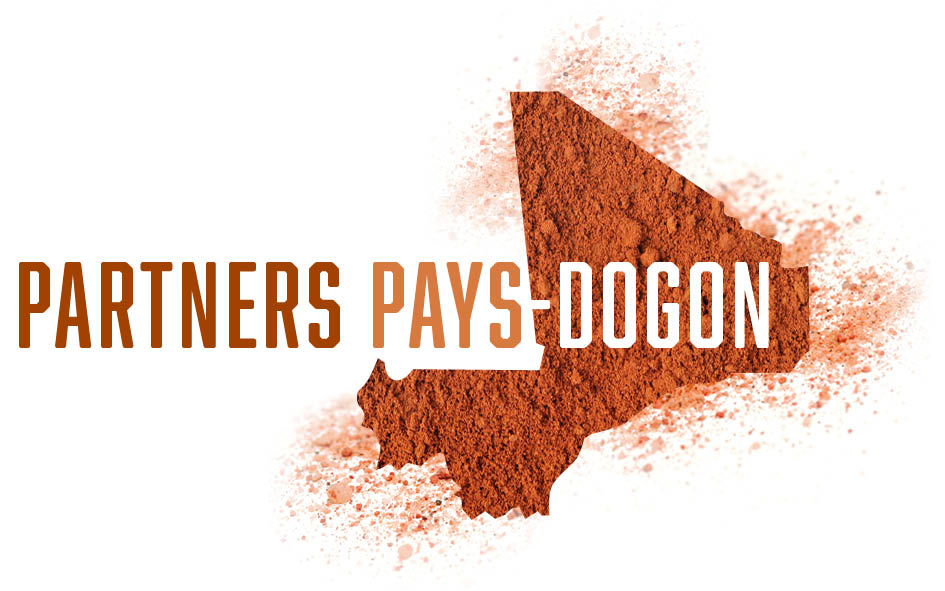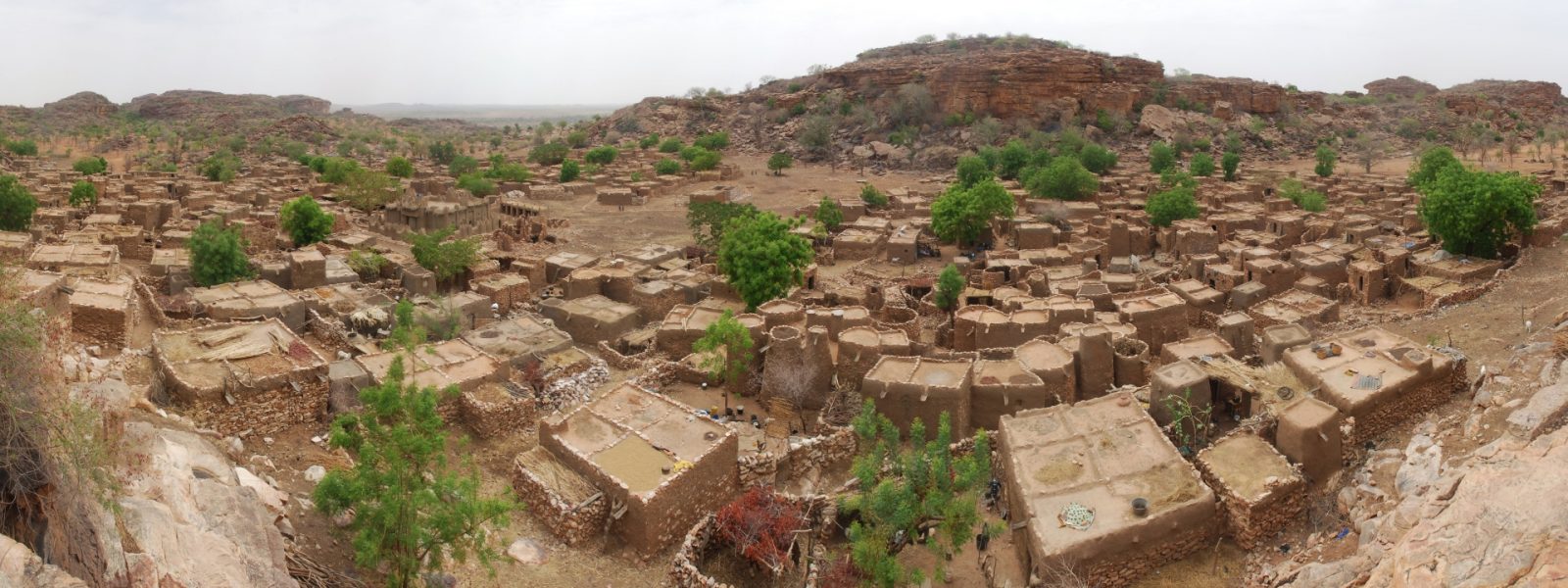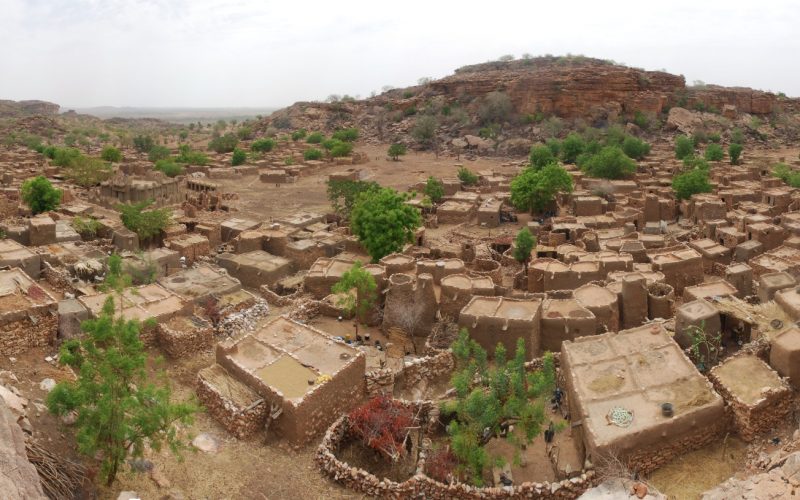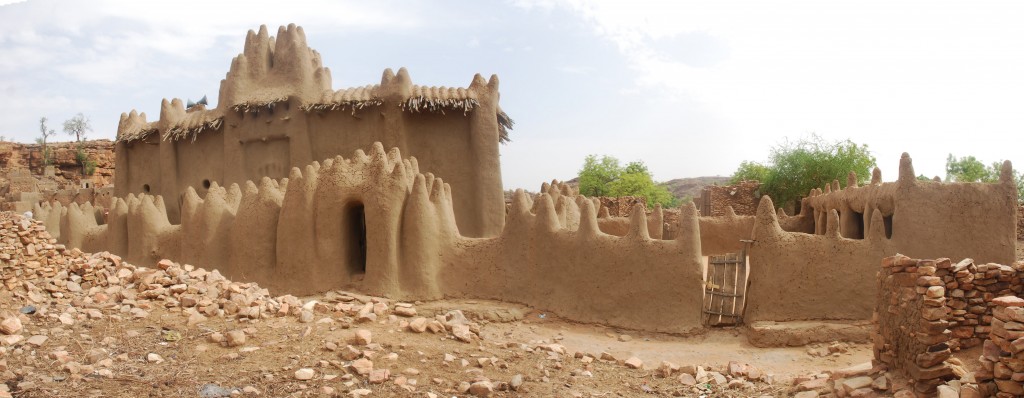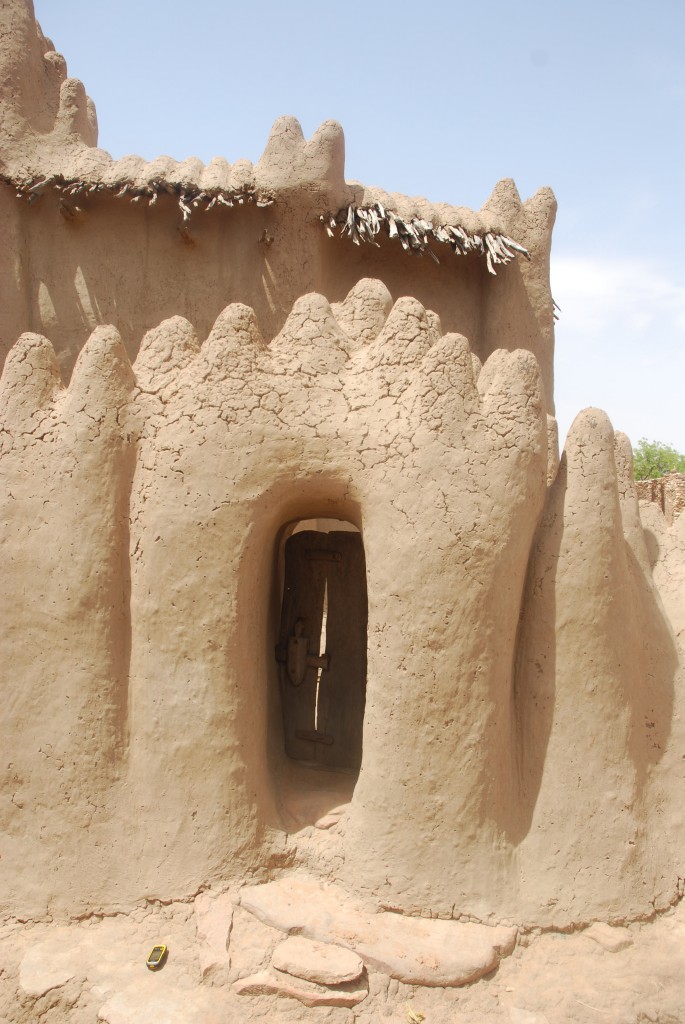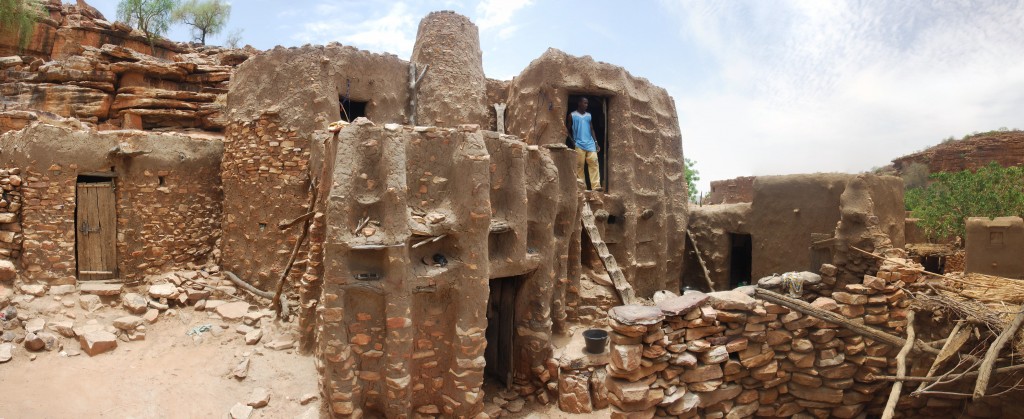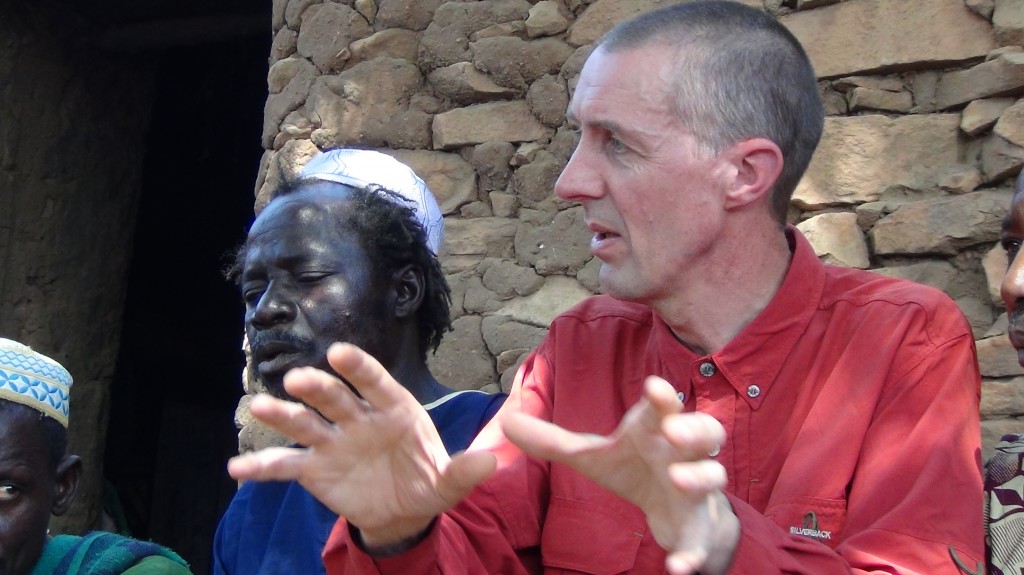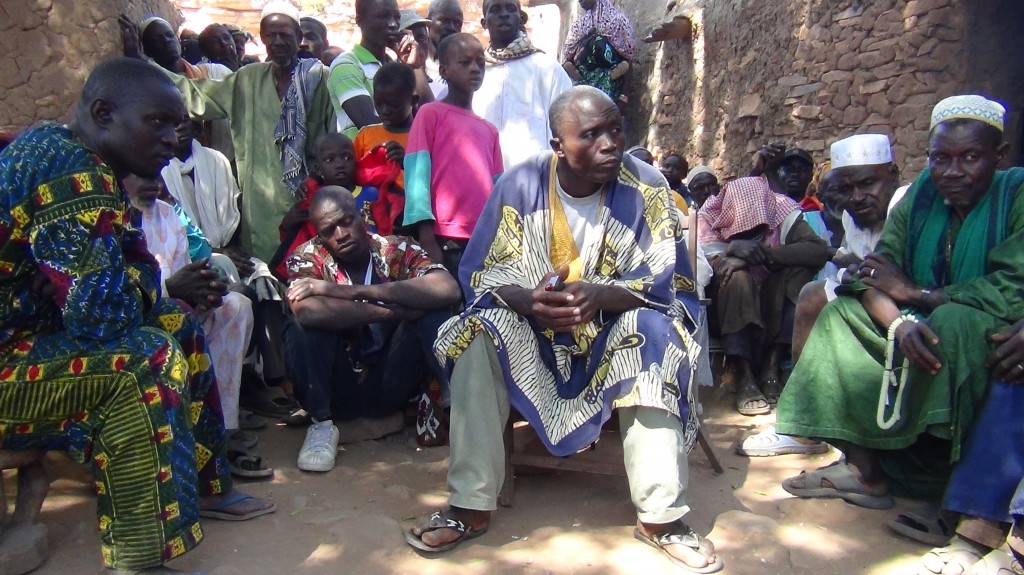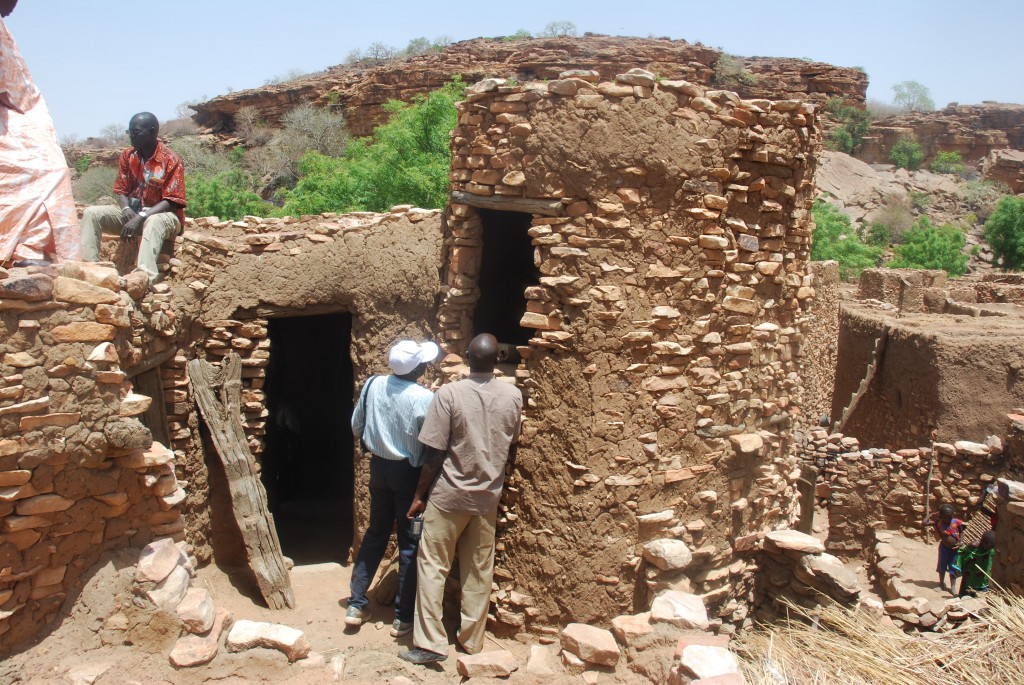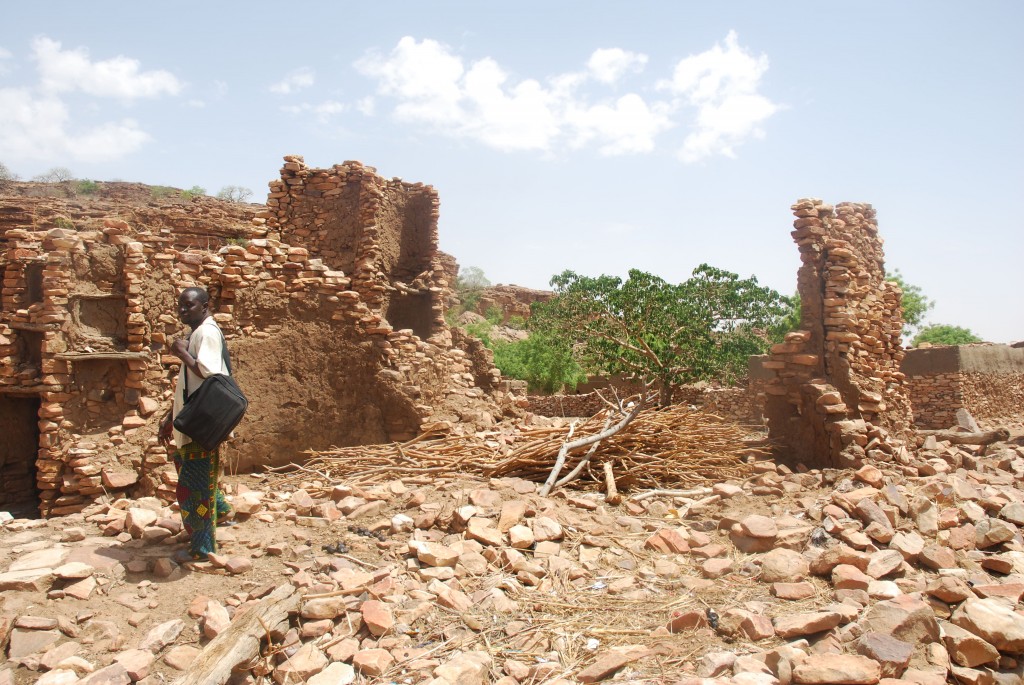The village of Nando lays hidden between two mountain ranges. In the “Cercle de Bandiagara” not far from the village Samadougou. It belongs to the rural area of Pignary Bana (the low stone plain). It is a unique village with a unique architecture and a mosque. Like all Dogon villages the origin of this village dates back to the times that Mali belonged to an empire called Mande (Mandinge). The first two inhabitants, two brothers, originally came from Djenné, and they have they founded the village.
The large mosque of the village dates from the 12-th century and stands in the center between the three sections of the village. Just like Tombouctou and Djenné, Nando is an islamic community. The name of the village is caused by the particular dwellings, because in Dogon Nando stands for a house with different floors. The inhabitants have walled the whole village, and it’s only to be reached via the three gates, for each section one. Since the establishment of the village, this wall has been of great importance, just like its hidden position, strategically between the two mountain ranges. The village of Nando always had a structure of a besieged stronghold with houses on observations posts. Thus it was well defensible against aggressors, because finally it was the only small islamic enclave in a further Animist area. Out of this position it was also good hunting, because hunting was the main source of food next to agriculture.
In the three sections with about 130 families, now live some 1.200 people. Getting from the village into the valley is an almost 1.500 meters walk from the West exit and 2.000 meters from the Eastern one. But the accessibility of the village still remains one of the most difficult points, because there is no possibility to reach the village with a donkey cart or by car.
Many of the dwellings are in a mediocre to bad shape. This is largely due to the lack of water in the past. Since a few years 3 wells have been made by the Foundation Dogon Education and this enables life again in the village and therewith also the wish of the inhabitants rose again to renovate and to repair their houses.
Several methods are possible, entailing different costs for the inhabitants. Wood for the reparation of the floorings and the roofs is very expensive, but also the additives needed to make the last finishing with clay more sustainable is mostly dropped because it is regarded as too costly.
Another bottleneck is the transport of new fresh Banco that must come from the plain. Every year the repaired road to the village is largely swept away, finally leading to transport being carried out on the head. Of course this slows down very much the pace of execution of interventions.
In this respect we are busy to develop an integrated approach of the project. The goad of all missions in 2012 and in 2013 is to make a clear inventory of all needed interventions and problems, additional to those things that are already realized by the inhabitants themselves. Meanwhile three moments of inventory have passed.
In June 2012, there was a first round of consultation with the village, how do they see the project and what are they going to do, and how could we assist them.
During the second visit in December 2012 a visit has been carried out together with a representative of the MCB (Mission Culturelle de Bandiagara). Also a larger circle of representative was present then, like the mayor of Nando, Bolimba and all Chefs de Village. First agreements have been reached regarding where and when the interventions of the village itself will get started. Photo series of many houses have also been made and a first inventory of bottlenecks has been produced. The most important issue remains in particular a discussion about the most sustainable method applying the last layer of plaster, which mixture is working best, and which additive should be chosen.
The third visit has been carried out in March 2013 by a technical team, starting to measure the first houses and to describe the actual approach. Also an additional photo documentation has been produced (team: Hamidou Sangare, Moussa Coulibaly, Bourema Diallo and the local project leader Sidi Degoga, inhabitant of Nando and Amatigue Dara (ADI)).
On 4 May 2013 we have visited the project in order to evaluate the reports, to draw careful conclusions and to formulate next steps. Specifically for this opportunity next to the representative of MCB (Ouattara), Boubabacar Kouroumanse (head of the bricklayers’ guild in Djenné) has been mobilized. The activities of that day have further been registered by filmmaker Mamamdou Moriko. Meanwhile all houses of all families have been counted, their granaries, the family house. By means of GPS all houses have been located in situ, combined with the family names.
Together with Boubacar we have observed that in a number of houses done by us the basis in itself is all right, but that in particular and clearly one year afterwards an additional layer of plaster should be applied with the right additives that obviously haven’t been used now.
Second conclusion is that far too meager clay is used now, the one present on the terrain. To this material basically too few additives have been added too. Fresh supply of richer clay seems necessary, whereby care should be taken to not supply completely differently colored clay for the sake of uniformity. Further it’s evident that a speedy approach is needed to prevent more damage at various houses.
We have also considered more particularly a specific number of houses. The team noticed again that the richness of the houses will only then be visible when they have been plastered. This is demonstrated clearly by a number of houses we have already been treating. It’s necessary to search still better in old archives to be able to compare situations before and after restoration.
In the meanwhile and since December 2012, parts of two collapsed houses have been restored and it seems that the basic know-how is still available amongst a number of inhabitants. But as noted before, because of the lack of means, one works with too poor basic materials.
There is a clear consensus that one of the first steps should be a fast treatment of the access-road, by which supply with carts will be possible again.
Next to this, a number of houses that have been treated basically now will be plastered in the next year with a second layer composed of different mixtures. MCB will also come up with a number of proposals in her report, in addition to the proposals made by Boubacar and the traditions discussed in the village.
It’s clear that the drawings in the technical reports from March 2013 are deficient and we will investigate how its organization might be improved. It’s already clear that we will realize this simultaneously with the implementation of the project and that we will make an inventory of those houses that need to be measured more completely.
